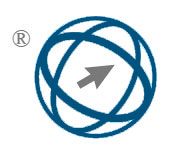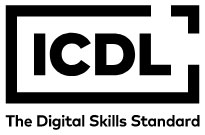Context-Enriched Dynamic Graph Word Embeddings for Robust NLP Applications
Abstract
Understanding the contextual relationships between words is essential for effective natural language processing
(NLP). Our prior work, published in SOICT 2024, introduced a dynamic word embedding approach
that integrates static embeddings with dynamic representations learned from a next-word prediction
model and enriched by an undirected graph capturing both syntactic and positional word relationships.
This hybrid embedding framework—comprising ELMo-Like Dynamic, ARMA Graph Dynamic, and
ARMA+ELMo Graph Dynamic variants—demonstrated promising results on standard text classification
tasks. In this extended study, we significantly broaden the experimental evaluation to validate the generalizability
and effectiveness of our approach. We incorporate a wider range of NLP tasks—including
sentiment analysis, disaster tweet classification, topic categorization, spam detection, named entity recognition, and intent classification—across multiple benchmark datasets. Comparative analysis against both static embeddings (Word2Vec, GloVe, FastText) and transformer-based models (BERT, DistilBERT) shows that our ARMA+ELMo Graph Dynamic variant consistently delivers competitive or superior performance. Notably, our method achieves a classification accuracy of 93.2% on the AG News topic classification task and an F1-score of 94.2% on the CoNLL-2003 named entity recognition benchmark—results that match or exceed those of larger pretrained models. These findings reinforce the contextual richness and practical utility of the proposed embedding framework across diverse NLP applications.
Full Text:
PDFReferences
T. Mikolov, K. Chen, G. Corrado, and J. Dean, “Efficient estimation of word representations in vector space,” arXiv preprint arXiv:1301.3781, 2013.
J. Pennington, R. Socher, and C. D. Manning,
“Glove: Global vectors for word representation,” in Proceedings of the 2014 conference on empirical methods in natural language processing (EMNLP), 2014, pp. 1532–1543.
M. E. Peters, M. Neumann, M. Iyyer, M. Gard-
ner, C. Clark, K. Lee, and L. Zettlemoyer, “Deep
contextualized word representations,” in Proceed-
ings of NAACL-HLT, 2018, pp. 2227–2237.
ings of NAACL-HLT, 2018, pp. 2227–2237.
J. Devlin, M.-W. Chang, K. Lee, and
K. Toutanova, “Bert: Pre-training of deep
bidirectional transformers for language under-
standing,” in Proceedings of NAACL-HLT, 2019,
pp. 4171–4186.
R. E. Himes, H.-A. Tran, and T. X. Tran, “Lever-
aging dynamic graph word embedding for ef-
ficient contextual representations,” in Interna-
tional Symposium on Information and Communi-
cation Technology. Springer, 2024, pp. 243–254.
P. Bojanowski, E. Grave, A. Joulin, and
T. Mikolov, “Enriching word vectors with sub-
word information,” Transactions of the Associ-
ation for Computational Linguistics, vol. 5, pp.
–146, 2017.
O. Levy and Y. Goldberg, “Dependency-based
word embeddings,” in Proceedings of the 52nd
Annual Meeting of the Association for Computa-
tional Linguistics (Volume 2), 2014, pp. 302–308.
T. N. Kipf and M. Welling, “Semi-supervised
classification with graph convolutional networks,”
arXiv preprint arXiv:1609.02907, 2016.
F. M. Bianchi, D. Grattarola, L. Livi, and
C. Alippi, “Graph neural networks with convolu-
tional arma filters,” IEEE Transactions on Pat-
tern Analysis and Machine Intelligence, vol. 44,
no. 7, pp. 3496–3507, 2021.
D. Grattarola and C. Alippi, “Graph neural
networks in tensorflow and keras with spek-
tral,” IEEE Computational Intelligence Maga-
zine, vol. 16, no. 1, pp. 99–106, 2021.
E. Saravia, H.-C. T. Liu, Y.-H. Huang, J. Wu, and
Y.-S. Chen, “Carer: Contextualized affect repre-
sentations for emotion recognition,” in Proceed-
ings of the 2018 conference on empirical methods
in natural language processing, 2018, pp. 3687–
A. Howard, d. de Vries, P. Culliton, and
Y. Guo, “Natural language processing with
disaster tweets,” Kaggle competition, 2019,
https://www.kaggle.com/competitions/nlp-
getting-started.
X. Zhang, J. Zhao, and Y. LeCun, “Character-
level convolutional networks for text classifica-
tion,” in Advances in Neural Information Process-
ing Systems 28 (NeurIPS 2015), 2015, pp. 649–
T. A. Almeida, J. M. G. Hidalgo, and A. Ya-
makami, “Contributions to the study of sms spam
filtering: New collection and results,” in Proceed-
ings of the 11th ACM Symposium on Document
Engineering (DocEng ’11), 2011, pp. 259–262.
E. F. Tjong Kim Sang and F. De Meulder, “Intro-
duction to the conll-2003 shared task: Language-
independent named entity recognition,” in Pro-
ceedings of the Seventh Conference on Natural
Language Learning at HLT-NAACL 2003, 2003,
pp. 142–147.
A. Coucke, A. Saade, A. Ball, T. Bluche,
A. Caulier, D. Leroy, C. Doumouro, T. Gissel-
brecht, T. Lavril, M. Primet, and J. Dureau,
“Snips voice platform: An embedded spo-
ken language understanding system for private-
by-design voice interfaces,” arXiv preprint
arXiv:1805.10190, 2018.
V. Sanh, L. Debut, J. Chaumond, and
T. Wolf, “Distilbert, a distilled version of
bert: smaller, faster, cheaper and lighter,”
arXiv preprint arXiv:1910.01108, 2019. [Online].
Available: https://arxiv.org/abs/1910.01108
DOI: https://doi.org/10.31449/inf.v49i3.10121

This work is licensed under a Creative Commons Attribution 3.0 License.









